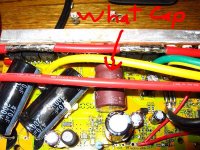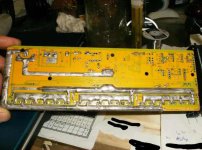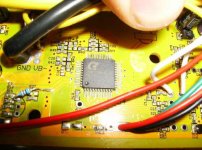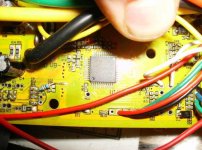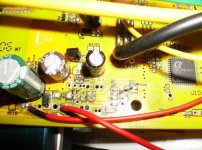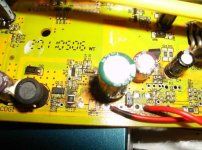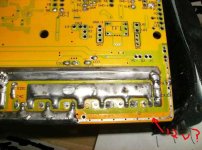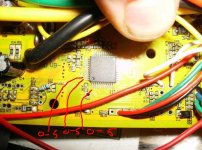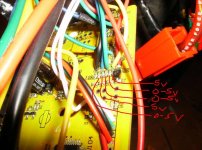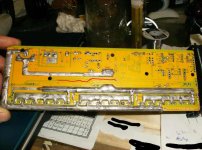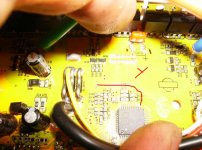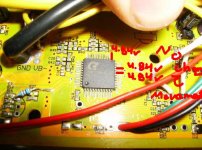Hello
I recently decided to add more batteries to my pack and step the voltage up to 100volts from 80. Bike was working great at 80volts but I had the batteries just lying around so I decided to strap them on and see what 100volts would do.
With everything hooked up the bike would not move, I did not see any smoke etc. when I hooked everything together.
however when I took the controller apart to see If I could notice anything wrong it became quite apparent that something had fried (voltage regulator?).
as I am a complete noob to controllers I need some assistance in identifying the component/components that fried and what components to purchase and install so that this will not happen again.
controller is a 18 FET 72V 65A Brushless Controller EC-184110 (http://endless-sphere.com/forums/viewtopic.php?f=31&t=16605)
Thanks
Dfar
View attachment 2
View attachment 1

I recently decided to add more batteries to my pack and step the voltage up to 100volts from 80. Bike was working great at 80volts but I had the batteries just lying around so I decided to strap them on and see what 100volts would do.
With everything hooked up the bike would not move, I did not see any smoke etc. when I hooked everything together.
however when I took the controller apart to see If I could notice anything wrong it became quite apparent that something had fried (voltage regulator?).
as I am a complete noob to controllers I need some assistance in identifying the component/components that fried and what components to purchase and install so that this will not happen again.
controller is a 18 FET 72V 65A Brushless Controller EC-184110 (http://endless-sphere.com/forums/viewtopic.php?f=31&t=16605)
Thanks
Dfar
View attachment 2
View attachment 1



